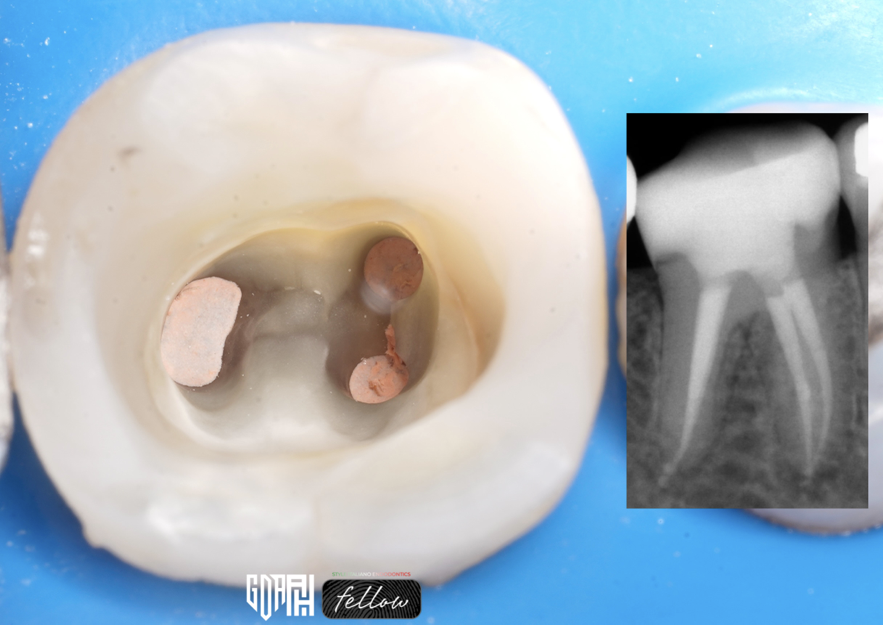
Pre endodontic build up importance
23/02/2025
Fellow
Warning: Undefined variable $post in /var/www/vhosts/styleitaliano-endodontics.org/endodontics.styleitaliano.org/wp-content/plugins/oxygen/component-framework/components/classes/code-block.class.php(133) : eval()'d code on line 2
Warning: Attempt to read property "ID" on null in /var/www/vhosts/styleitaliano-endodontics.org/endodontics.styleitaliano.org/wp-content/plugins/oxygen/component-framework/components/classes/code-block.class.php(133) : eval()'d code on line 2
Pre-endodontic build-up refers to the process of restoring a tooth’s structure before performing a root canal. When a tooth is severely damaged by decay, trauma, or previous restorations, its structural integrity can be compromised. This can make it difficult for the dentist to access the root canals properly and provide a durable restoration after the endodontic treatment. Pre-endodontic build-up helps stabilize the tooth, creating a more predictable and secure environment for the root canal procedure.,.
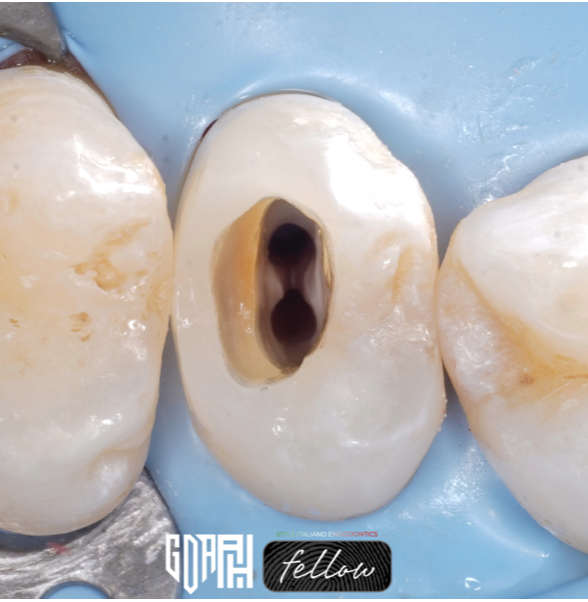
Fig. 1
1. Structural Stability:
The primary purpose of pre-endodontic build-up is to restore the tooth’s structural integrity. Many teeth that require root canal therapy are weakened due to extensive decay or previous restorations. Without adequate build-up, these teeth might not withstand the pressure exerted during the root canal procedure, potentially leading to fractures or further complications. By reinforcing the tooth structure, the dentist can ensure that the tooth is stable enough to endure the treatment process and the final restoration.
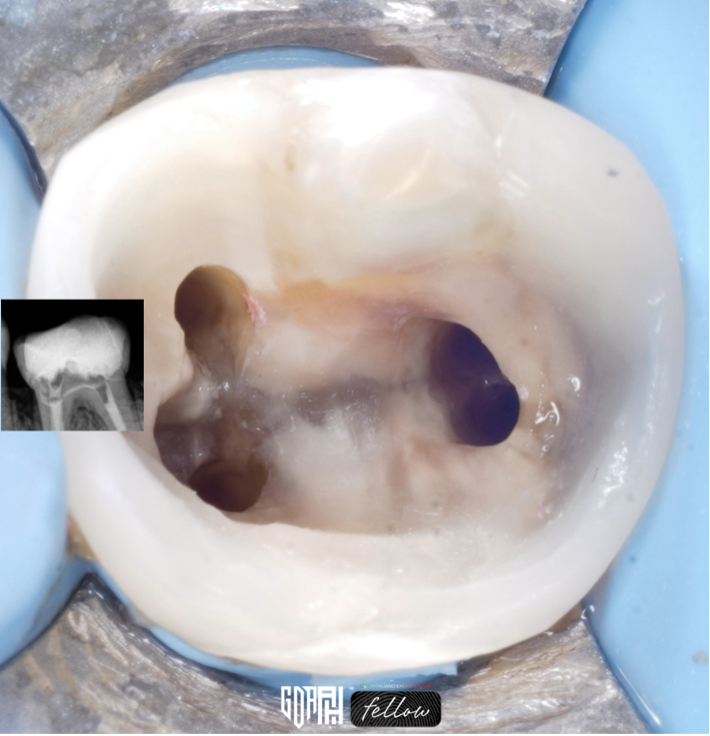
Fig. 2
2. Improved Access and Visibility:
Root canal procedures require precise access to the tooth’s canals. In cases where the tooth is extensively damaged, accessing these canals can be challenging. Pre-endodontic build-up helps to reestablish the normal anatomy of the tooth, making it easier for the dentist to locate and clean the canals thoroughly. This improved access is crucial for the success of the treatment, as it allows for more effective removal of infected tissue and better shaping and filling of the canals.
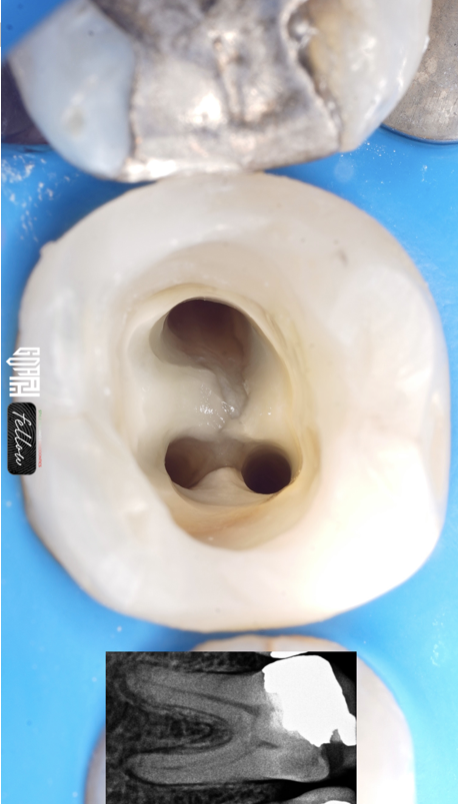
Fig. 3
3. Prevention of Tooth Fracture:
Teeth that require root canal therapy are often at a high risk of fracture due to their compromised structure. Pre-endodontic build-up reduces this risk by reinforcing the tooth before the root canal procedure. By stabilizing the tooth, the build-up helps prevent fractures that could lead to the loss of the tooth altogether. This preventive measure is especially important in teeth that are already weakened, as it can mean the difference between saving the tooth and requiring extraction.
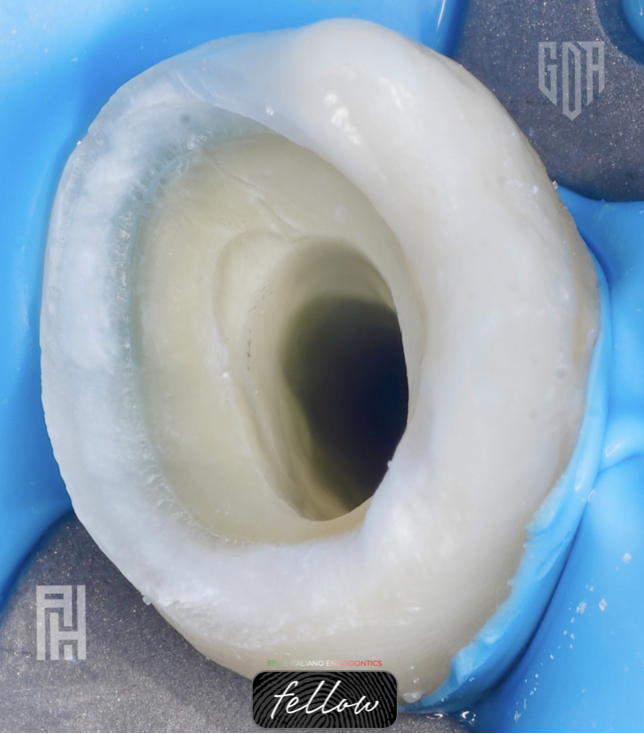
Fig. 4
4. Enhanced Retention for Temporary and Permanent Restorations:
After a root canal, the tooth needs to be restored with a crown or other types of restoration to protect it from future damage. A tooth that has undergone pre-endodontic build-up offers better retention for these restorations. The build-up material acts as a foundation, providing a stable base for both temporary and permanent restorations. This is particularly important in teeth with minimal remaining structure, where the risk of restoration failure is higher.
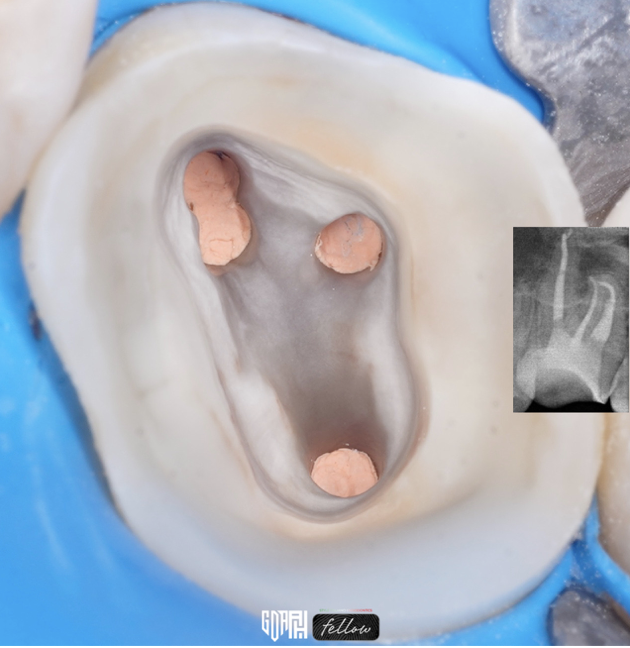
Fig. 5
5.Better Prognosis for Root Canal Therapy:
The overall success of root canal therapy is closely linked to the condition of the tooth before the procedure. By performing a pre-endodontic build-up, the dentist can significantly improve the tooth’s prognosis. A stable, well-built-up tooth is more likely to respond favorably to the treatment, leading to a higher success rate and longer-lasting results. This proactive approach not only enhances the outcome of the root canal but also contributes to the long-term preservation of the tooth
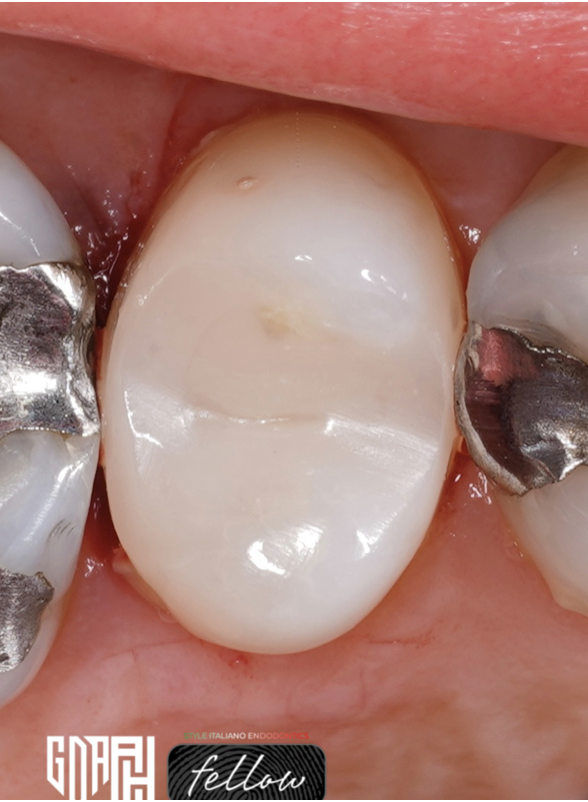
Fig. 6
6. Patient Comfort and Confidence:
A well-executed pre-endodontic build-up can also improve patient comfort during and after the procedure. A tooth that has been properly stabilized is less likely to cause discomfort or complications, leading to a smoother and more comfortable treatment experience. Additionally, patients can have greater confidence in the durability of their tooth, knowing that it has been thoroughly prepared and reinforced before undergoing root canal therapy.
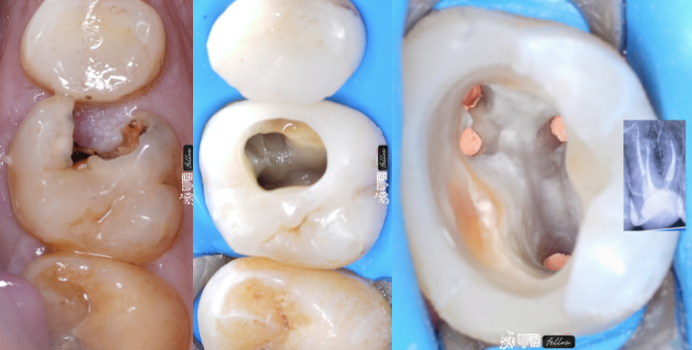
Fig. 7
MATERIALS FOR PRE ENDO BUILD UP
The choice of materials and techniques for pre-endodontic build-up can vary depending on the specific case. Commonly used materials include composite resin, amalgam, and glass ionomer cement. Each material has its own advantages and is selected based on factors such as the extent of the damage, the location of the tooth, and the dentist’s preference.
The technique for pre-endodontic build-up typically involves removing any decayed or damaged tooth structure, followed by the placement of the build-up material. The material is then shaped to restore the tooth’s original form, ensuring proper occlusion and stability. In some cases, a post may be placed within the root canal to provide additional support for the build-up.

Fig. 8
About the author:
AHMED HAMEED ALHARRAN
BDS
graduated from basra dental collage-Iraq 2015-2016
Conclusions
Pre-endodontic build-up is a crucial step in ensuring the success of root canal therapy. By reinforcing the tooth structure, improving access and visibility, and providing better retention for restorations, this procedure plays a vital role in achieving favorable outcomes in endodontic treatment. For dentists, understanding the importance of pre-endodontic build-up and mastering the associated techniques is essential for providing the highest level of care to patients. In the ever-evolving field of endodontics, the significance of this procedure remains constant, underscoring its value in preserving natural teeth and enhancing the success of root canal therapy.
Bibliography
1. American Association of Endodontists. (n.d.). Clinical resources and guidelines. Retrieved from https://www.aae.org
2.American Association of Endodontists. (n.d.). Endodontics: Colleagues for Excellence. Retrieved from https://www.aae.org/specialty/clinical-resources/aae-colleagues-excellence-newsletter/
3.Journal of Endodontics. (n.d.). Journal of Endodontics. Retrieved from https://www.jendodon.com/
4.Hargreaves, K. M., & Berman, L. H. (2016). Cohen’s pathways of the pulp (11th ed.). St. Louis, MO: Elsevier.
5.Ingle, J. I., Bakland, L. K., & Baumgartner, J. C. (2019). Ingle’s endodontics (7th ed.). St. Louis, MO: Elsevier.
6.European Society of Endodontology. (n.d.). Guidelines and position statements. Retrieved from https://www.e-s-e.eu/

